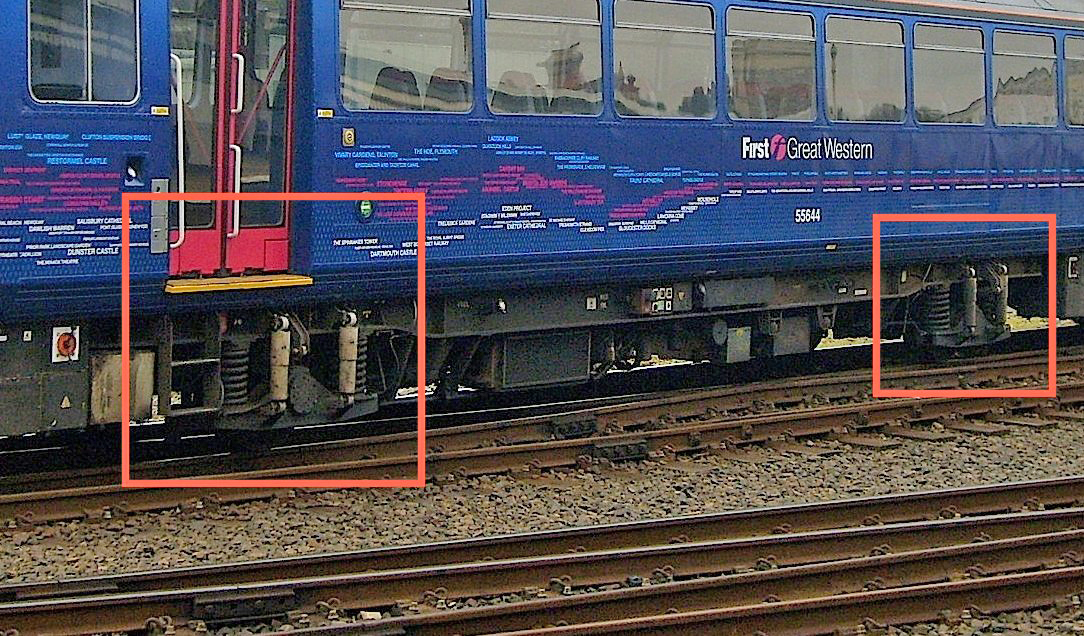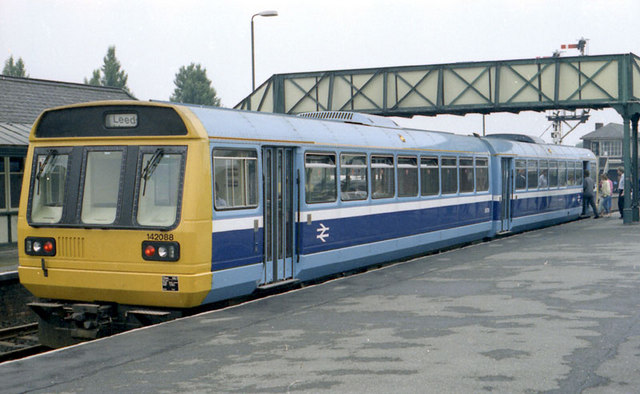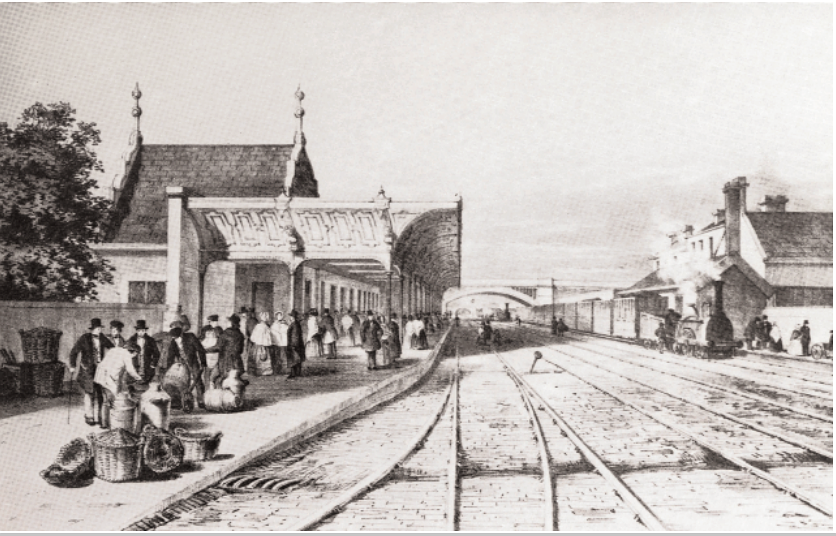|
Wales And Borders
Wales and Borders was a train operating company in the United Kingdom owned by National Express that operated the Wales & Borders franchise from October 2001 until December 2003. History In October 1996, the Valley Lines franchise commenced operating services around Cardiff and the South Wales Valleys. In March 2000, the Strategic Rail Authority decided to re-organise the Valley Lines and Wales & West franchises, both being operated by National Express. Valley Lines became Wales & Borders from October 2001, combining its services with most of Wales & West's Welsh services and the Cambrian Line services from Central Trains. In September 2003 Wales & Borders took over the North Wales Coast Line services from First North Western. Services Wales and Borders operated passenger services in Wales and the West Country as seen in their route map. It also operated services to Liverpool Lime Street, Manchester Piccadilly, Birmingham International, Penzance and London Waterloo. On 14 Oc ... [...More Info...] [...Related Items...] OR: [Wikipedia] [Google] [Baidu] |
British Rail Class 158
The British Rail Class 158 '' Express Sprinter'' is a diesel multiple unit (DMU) passenger train. It is a member of the Sprinter series of regional trains, produced as a replacement for British Rail's first generation of DMUs; of the other members, the Class 159 is almost identical to the Class 158, having been converted from Class 158 to Class 159 in two batches to operate express services from London Waterloo to the West of England. The Class 158 was constructed between 1989 and 1992 by British Rail Engineering Limited (BREL) at its Derby Litchurch Lane Works. The majority were built as two-car sets, some three-car sets were also produced. During September 1990, the first Express Sprinters were operated by ScotRail; the type was promptly introduced to secondary routes across the Midlands, Northern England, Wales and the South West. The Class 158 enabled the replacement of large numbers of elderly DMUs but also several locomotive-hauled trains as well; this was partially a ... [...More Info...] [...Related Items...] OR: [Wikipedia] [Google] [Baidu] |
Liverpool Lime Street Railway Station
Liverpool Lime Street is a terminus railway station and the main station serving the city centre of Liverpool. Opened in August 1836, it is the oldest still-operating grand terminus mainline station in the world. A branch of the West Coast Main Line from London Euston terminates at the station, as does the original Liverpool and Manchester Railway. Journeys from Lime Street cover a wide range of destinations across England, Scotland and Wales. Having realised that their existing Crown Street railway station was too far away from the city centre, the Liverpool and Manchester Railway commenced construction of the more central Lime Street station in October 1833. Designed by John Cunningham, Arthur Holme and John Foster Jr, it was officially opened in August 1836. Proving to be very popular with train commuters, expansion of the station had become necessary within six years of its opening. The first expansion, which was collaboratively produced by Joseph Locke, Richard Turn ... [...More Info...] [...Related Items...] OR: [Wikipedia] [Google] [Baidu] |
British Rail Class 143
The British Rail Class 143 is a diesel multiple unit railbus, part of the Pacer family of passenger trains introduced between 1985 and 1986. During the 1980s, British Rail (BR) was interested in replacing its first-generation diesel multiple units, particularly in the use of railbuses to service its lightly used branch lines. It was decided to develop such a vehicle with a high level of commonality with the widely used Leyland National bus, leading to its modular design serving as the basis for the design. Several single and two-car prototypes were constructed and evaluated, leading to an initial production batch by British Leyland, designated as the Class 141 units. BR, seeking to procure improved derivatives of the Class 141, placed an order with the manufacturers Hunslet-Barclay and Walter Alexander to construct its own variant, the Class 143. Entering operational service during the mid-1980s, the Class 143 embodied several advances over the original model in terms of ri ... [...More Info...] [...Related Items...] OR: [Wikipedia] [Google] [Baidu] |
British Rail Class 142
The British Rail Class 142 Pacer were diesel multiple units built for British Rail (BR) from 1985 to 1987. The class were built with a high level of commonality with the widely-used Leyland National bus. They are part of the Pacer family of railbuses. The last set was withdrawn from service in 2020. Background By the beginning of the 1980s, British Rail (BR) operated a large fleet of first-generation DMUs, which had been constructed in prior decades to various designs. While formulating its long-term strategy for this sector of its operations, British Rail planners recognised that considerable costs would be incurred by undertaking refurbishment programmes necessary for the continued use of these ageing multiple units, particularly due to the necessity of handling and removing hazardous materials such as asbestos. In the light of the high costs involved in retention, planners examined the prospects for the development and introduction of a new generation of DMUs to succeed th ... [...More Info...] [...Related Items...] OR: [Wikipedia] [Google] [Baidu] |
Holyhead Railway Station
, symbol_location = gb , symbol = rail , image = Holyhead Railway Station, Holy Island (507270) (32932192272).jpg , borough = Holyhead, Anglesey , country = Wales , coordinates = , grid_name = Grid reference , grid_position = , owned = Network Rail , manager = Transport for Wales Rail , platforms = 3 , code = HHD , classification = DfT category E , original = Chester and Holyhead Railway , pregroup = London and North Western Railway , postgroup = London, Midland and Scottish Railway , years = , events = First station opened , years1 = 15 May 1851 , events1 = Station resited , years2 = 1 January 1866 , events2 = Station resited , mpassengers = , footnotes = Passenger statistics from the Office of Rail and Road , embedded = Holyhead railway station ( cy, Gorsaf reilffordd Caergybi) serves the Welsh town of Holyhead ( cy, Caergybi) on Holy Island, Anglesey. The station is the western terminus of the North Wales Coast Line west of and is managed b ... [...More Info...] [...Related Items...] OR: [Wikipedia] [Google] [Baidu] |
Llandudno Railway Station
Llandudno railway station serves the seaside town of Llandudno in North Wales, and is the terminus of a long branch line from on the Crewe to Holyhead North Wales Coast Line. The station is managed by Transport for Wales Rail, who operate all trains serving it. Llandudno Victoria station, the lower terminus of the Great Orme Tramway, is a 15-minute walk from the main station. History The first station and the branch line was constructed by the St. George's Harbour and Railway Company and opened on 1 October 1858. The trains at first ran to and from Conwy station until the completion of Llandudno Junction station. The line was soon absorbed by the London and North Western Railway, which in turn became part of the London, Midland and Scottish Railway in 1923. Vaughan Street in Llandudno was also laid out in 1858 as the station approach road. As the first station had become inadequate to cope with increasing usage, the present Llandudno station buildings and frontage, togeth ... [...More Info...] [...Related Items...] OR: [Wikipedia] [Google] [Baidu] |
Crewe Railway Station
Crewe railway station is a railway station in Crewe, Cheshire, England. It opened in 1837 and is one of the most historically significant railway stations in the world.Guardian newspaper article, ''The beauty of Crewe'' (6 December 2005). Retrieval Date: 10 August 2007. Crewe station is a major junction on the and serves as a rail gateway for . It is 158 miles north of |
Birmingham New Street Railway Station
Birmingham New Street is the largest and busiest of the three main railway stations in Birmingham city centre, England, and a central hub of the British railway system. It is a major destination for Avanti West Coast services from , and via the West Coast Main Line, the CrossCountry network, and for local and suburban services within the West Midlands; this includes those on the Cross-City Line between , and , and the Chase Line to and . The three-letter station code is BHM. The station is named after New Street, which runs parallel to the station, although the station has never had a direct entrance except via the Grand Central shopping centre. Historically, the main entrance to the station was on Stephenson Street, just off New Street. As of 2022, the station has entrances on Stephenson Street, Smallbrook Queensway, Hill Street and Navigation Street. New Street is the fifth busiest railway station in the UK and the busiest outside London, with 46.5 million passenger ... [...More Info...] [...Related Items...] OR: [Wikipedia] [Google] [Baidu] |
London Waterloo Railway Station
Waterloo station (), also known as London Waterloo, is a central London terminus on the National Rail network in the United Kingdom, in the Waterloo area of the London Borough of Lambeth. It is connected to a London Underground station of the same name and is adjacent to Waterloo East station on the South Eastern Main Line. The station is the terminus of the South West Main Line to via Southampton, the West of England main line to Exeter via , the Portsmouth Direct line to which connects with ferry services to the Isle of Wight, and several commuter services around west and south-west London, Surrey, Hampshire and Berkshire. The station was opened in 1848 by the London and South Western Railway, and it replaced the earlier as it was closer to the West End. It was never designed to be a terminus, as the original intention was to continue the line towards the City of London, and consequently the station developed in a haphazard fashion, leading to difficulty finding the ... [...More Info...] [...Related Items...] OR: [Wikipedia] [Google] [Baidu] |







.jpg)
